Insulating your home is extremely important to maintaining a comfortable living environment, and it also has a huge impact on the cost of heating and air conditioning the interior, which can make a huge difference in climates typical of states like Illinois. Like any technology in the construction industry, insulation is developing at a fascinating pace, and the past few years have brought us many innovations. What home insulation material is the best for my home? This and many questions will be answered in this article. We hope it will help you make a responsible and informed decision.
Table of Contents
What Are The Most Popular Home Insulation Materials?
Let’s start with the popular home insulation materials mentioned. Keep in mind that the solutions used in your region may differ somewhat from the content of this article – technologies used in Europe are basically unheard of in the United States, and vice versa. As a roofing contractor Glenview, we usually use mineral wool and spray foam, but as you can imagine, there is no golden mean and final choice of material always depends on plenty of factors such as budget, size of the house, design and urgency.
Fiberglass

Fiberglass insulation is a popular choice among home insulation contractors due to its effectiveness and affordability. Fiberglass is usually sold in form of rolls or loose-fill forms.
It’s a good insulation technology that offers total noncombustibility, good insulation performance and is inexpensive at the same time. On the other hand, fiberglass is very dangerous at the installation stage, as it can irritate the skin and respiratory tract. For this reason, self-installation of this material is strongly discouraged – it is better to use the services of a professional who uses appropriate protective equipment.
Spray Foam

Spray foam insulation is known for its excellent air sealing properties, making it a top choice for home insulation.
The insulating mechanism used by this technology is extremely simple – the foam expands upon application, filling all open spaces and forming air bubbles inside itself, resulting in a very high R-value. Spray foam is also highly resistant to moisture, making it a good insulation material for use in the climate zone typical of the northern part of the United States and Canada.
Spray foam comes in different types, but two are particularly popular: open-cell and closed-cell. The latter is a better option, but it comes at the cost of a higher price. In this case, we also recommend using our services, although installing the foam yourself is certainly much less hazardous to health.
Cellulose

Cellulose is an increasingly rare insulation material due to its low efficiency. Although it is very environmentally friendly, since cellulose is sourced from recycled paper products treated with fire retardants, its R-value is poor compared to mineral wool or spray foam. In addition, cellulose insulation requires relatively frequent replacement, as its performance declines over the years. On the other hand, recycled paper is a fairly inexpensive material.
Mineral Wool
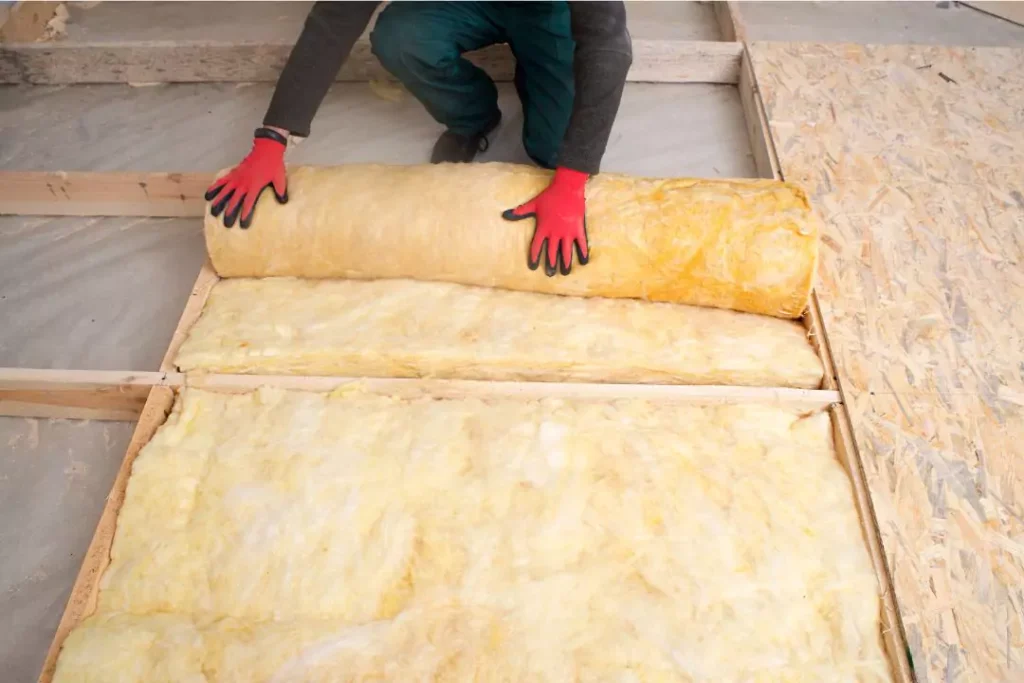
Mineral wool, also known as rock wool or slag wool, is an insulation material extracted from molten rock or industrial waste. It is completely fire resistant, highly resistant to water and offers excellent sound insulation properties, which is no small matter if you have a metal roof. Typically, this material is sold in roll form, which installs very quickly in open spaces.
Mineral wool is used for both wall and roof insulation. Remember, however, that cutting this material releases clouds of fine and very dangerous dust that can cause cancer.
Reflective Insulation
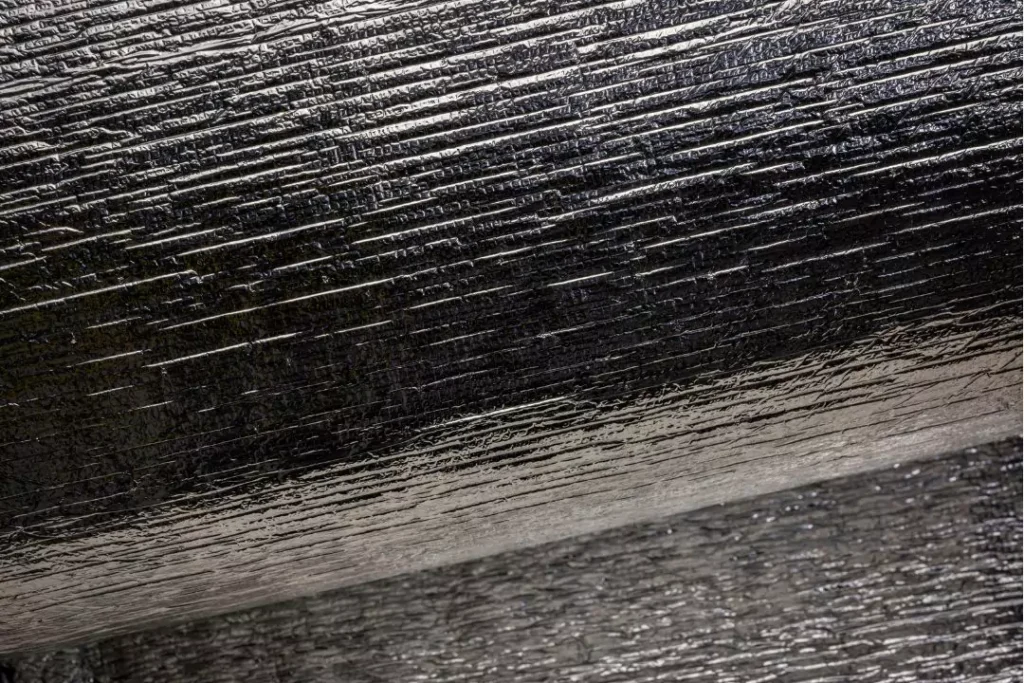
Reflective insulation is a fairly modern, and not very common, technology in construction. Instead of impeding penetration, a special layer reflects heat in the right direction. Typically, reflective insulation is made of aluminum sprayed onto special paper or plastic. Such a film is placed on ceilings or attics, for example.
What Is The Best Home Insulation Material? How To Determine It?
When evaluating home insulation materials, several factors must be considered to ensure you select the best option for your home:
Thermal Performance (R-Value)
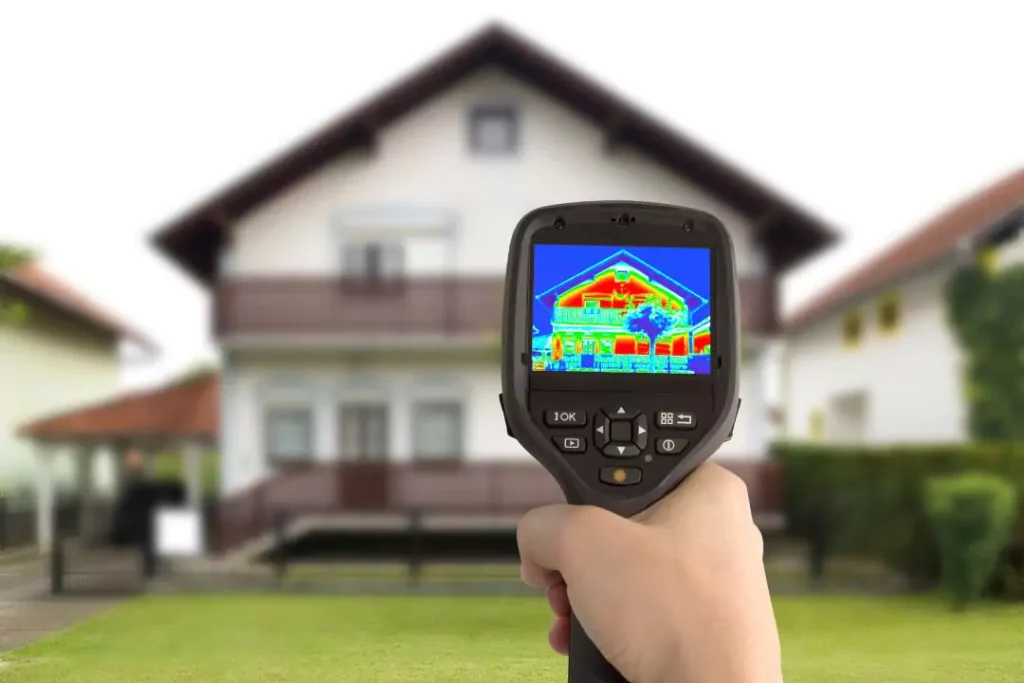
This is basically the most important parameter. The R-value meauseres an insulation material’s resistance to heat flow. The higher the R-value, the better your walls will retain heat, but arguably their price will also be less attractive. Typically, closed-cell spray foam and mineral wool have a much better R-value than cellulose and fiberglass, for example.
Cost and Ease of Installation
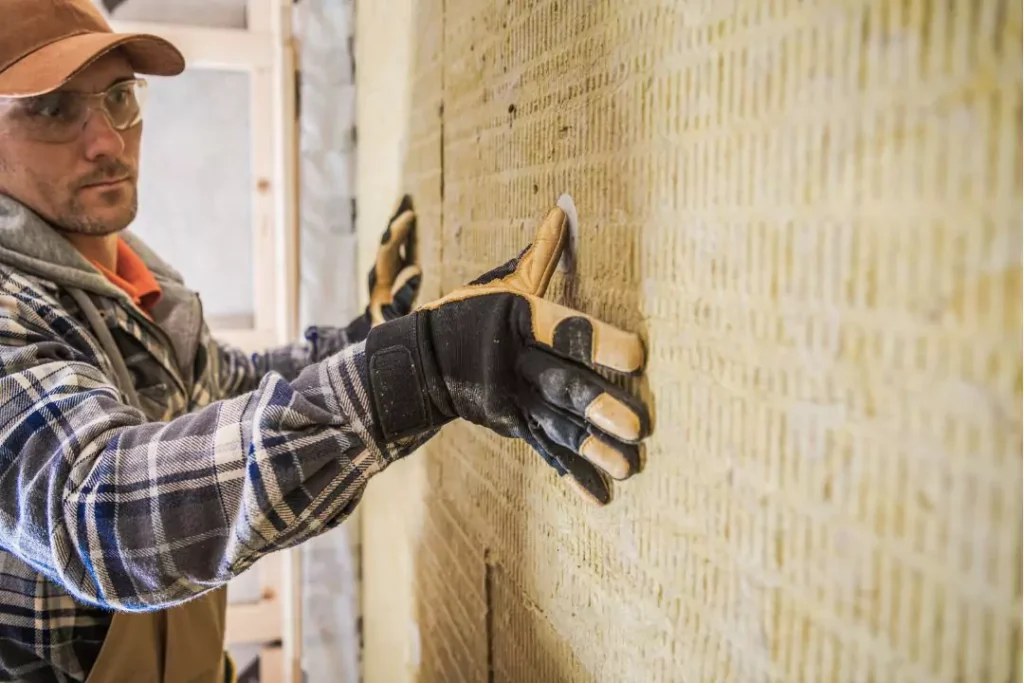
Prices of home insulation materials can vary widely. Fiberglass and cellulose are generally quite cheap, while closed-cell foam and minereal wool cases can cost up to several times more. When choosing a particular insulation technology, you also need to consider the cost of installation – you won’t be able to install spray foam on your own, as an inadequate technique will result in very poor performance of the entire layer, which will of course translate into higher home heating and cooling bills. On the other hand, fiberglass is hazardous to health – keep this in mind when considering a DIY project.
Durability and Lifespan
The durability and lifespan of home insulation materials are crucial factors as well. Spray foam and mineral wool usually can usually be used way longer than cellulose and they keep their insulating properties for many years. In contrast, already mentioned cellulose can deteriorate or settle, even after 7-10 years.
Environmental Impact

The environmental impact of home construction industry is widely criticised nowadays and homeowners try to prevent it. That’s why, cellulose is being used as an home insulation material, but asbetos is banned probably everywhere. Some products, like mineral wool are also sustainable, as they are produced with use of industrial waste.
Mold and Moisture Resistance
Concerns about home insulation’s resistance to moisture and mold are completely justified, especially if you live in humid areas like Chicagoland. If water once enters the insulation layer, it will likely stay there forever causing gradual but continuous mold growth.
So, can home insulation get wet? Yes, certain types like fiberglass and cellulose can, which may lead to mold issues. Specifically, can attic insulation get mold? Yes, particularly if it becomes wet. Closed-cell spray foam is more moisture-resistant, making it a better choice for damp areas and reducing the risk of mold. Be sure to pay attention to this aspect when choosing your insulation material.
Best Insulation Material for Different Areas of the Home
Remember that there is no universal home insulation material and different technologies should be used in different parts of the house. Therefore, let’s divide them according to the areas of application:
Attics

The natural choice for attic insulation are spray foam and cellulose. This is due to the existence of irregular shapes and small open spaces, which must be well filled so that heat does not penetrate through them. Remember, too, that a relatively large amount of heat escapes through the roof, so it is worth investing a little more money in its insulation.
Walls

For walls, two or even 3 layers of insulation are usually used. The first is insulating wool or fiberglass, which sits between the framing. On top of this, a special self-adhesive membrane, like Henry Blueskin, is laid, and then James Hardie Siding Glenview or ACM Panels are installed.
Basements and Crawl Spaces
In basements and crawl spaces, moisture resistance is key. Closed-cell spray foam is ideal due to its excellent moisture barrier and high R-value. Mineral wool is also a good option for its water-repellent properties. In addition, special films are used that, in addition to protecting against water, also offer additional thermal insulation.
Floors
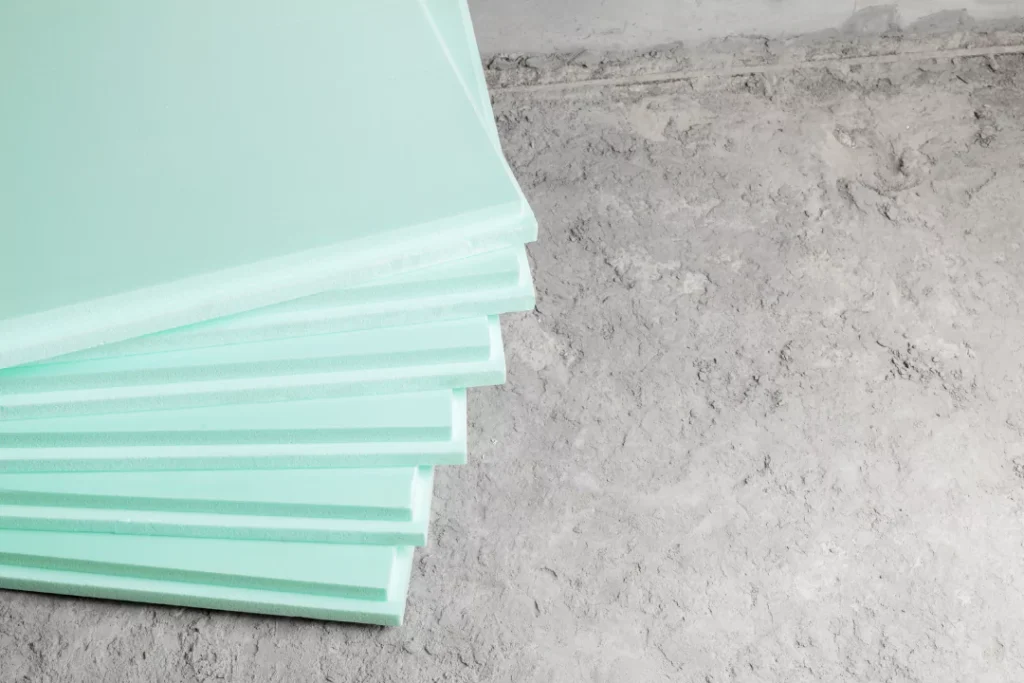
Correct floor insulation is not a simple task, because usually, the layer that reduces heat loss must also be resistant to pressure as well as moisture, especially when we are talking about single-story houses. Due to such requirements, the recommended solutions are fiberglass and polystyrene, and when choosing the latter material, you need to find products certified to insulate the floor – less hard forms of polystyrene will neither insulate well nor retain their original shape.
What to Consider When Choosing Home Insulation Material?
When selecting insulation for your home, consider the following factors:
Climate and Weather Conditions

If you live in a temperate climate and in a country where energy is relatively cheap, you may opt for less efficient home insulation with an inferior R-value. However, if you live in Alaska, Texas or Florida, it’s worth paying extra for mineral wool or spray foam. Reflective insulation also works well in hot climates.
Budget and Cost-Effectiveness
When choosing insulation material, be sure to evaluate the relationship between initial cost and long-terminal savings. A great deal depends on local energy prices – if energy is cheap, it makes sense to choose weaker insulation, which may require more electricity or gas to heat the house, but the potential savings would still not compensate for the higher initial price.
Home Structure and Design

Modern houses are built in such a way that the process of insulating them is relatively simple. This, of course, reduces the cost of such a service. In the case of older buildings, whose walls were not designed to be clad with an additional layer of mineral wool or foam, there will be irregularly shaped voids in many places. It is worth taking this factor into account, both in terms of ease of installation and its price, if you decide to use the services of professionals.
Professional vs. DIY Home Insulation Installation
Deciding between professional installation and a DIY approach depends on several factors:
Pros and Cons of Professional Installation
- By using a professional, you can be sure that your insulation will be installed correctly;
- By choosing an insulation contractor, you do not have to worry about the potential damage caused to your health;
- When you use a professional company, you can count on a warranty;
- Doing the insulation yourself at home is certainly much cheaper;
- Installation of many insulation materials is not too difficult, and you are most likely able to handle it on your own, as long as you have a knack for doing manual work.
Conclusion
Choosing the right home insulation material in 2024 involves balancing performance, cost, and environmental impact. Each material has its strengths and is best suited for specific areas of the home. By considering the factors discussed, homeowners can make informed decisions that enhance comfort, reduce energy costs, and contribute to a more sustainable future.
FAQs
What is the best insulation material for attics?
At this point, the undisputed leaders are spray foam and cellulose. They are relatively inexpensive, and at the same time, they excel at filling irregularly shaped voids. For modern houses, mineral wool will be a better choice, mainly due to its fairly low price and ease of installation.
How does spray foam compare to fiberglass insulation?
Spray foam is more expensive, but offers much better performance than fiberglass. If you have a large enough budget, closed-cell foam will perform much better as a home insulation material.
Is cellulose insulation eco-friendly?
In principle, yes, because cellulose insulation is made from recycled paper products like newspapers and packaging.
Is home insulation flammable?
It depends. Cellulose is flammable, but mineral wool is no longer. Some spray foams and polysterens are manufactured to be flame resistant, but high enough temperatures will destroy them anyway.
Do all houses have insulation?
No, although it is now the standard. Very old buildings with thick walls do not need to have additional thermal insulation, because this role is performed by the air enclosed in the bricks. However, if you are building a modern house, you should definitely opt for mineral wool or another form of insulation.
What R-Value for home insulation?
The R-value will vary depending on the part of the house you want to insulate. For walls, values between 13 and 23 are considered good, and values above 23 are considered very good. For roofs, the parameter should be between 30 and 50, with a recommendation that the R-value of your attic should exceed 35.

